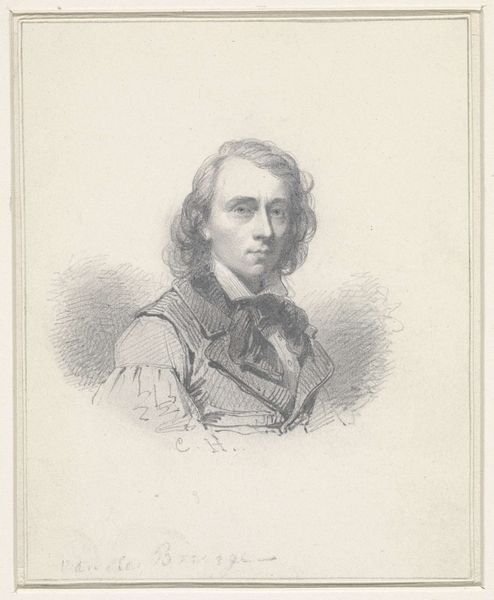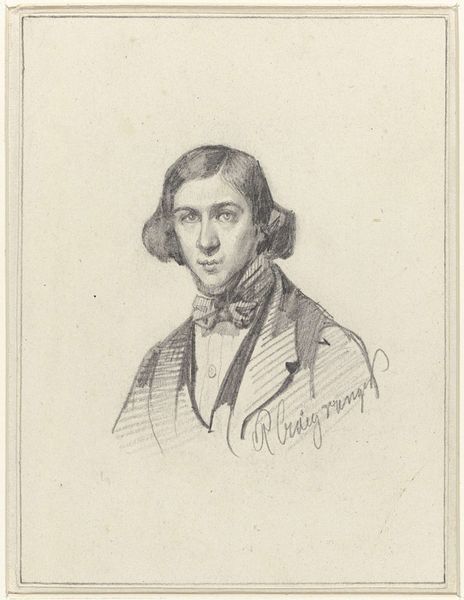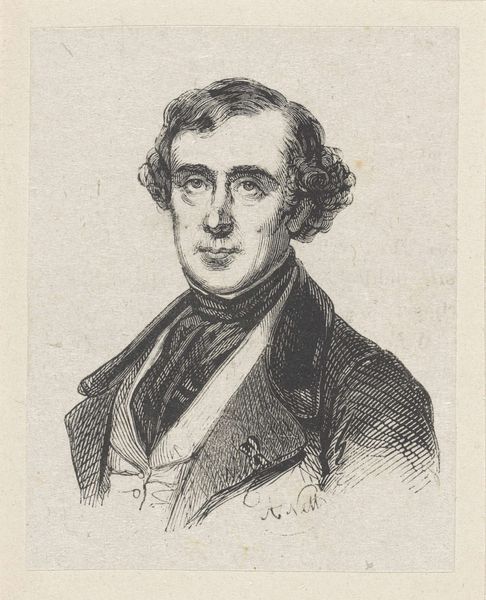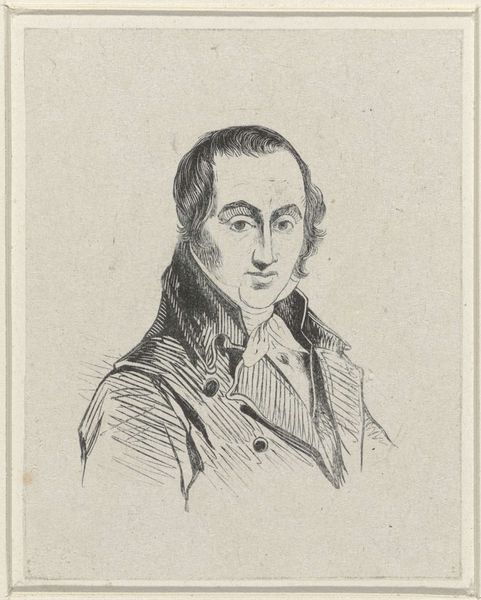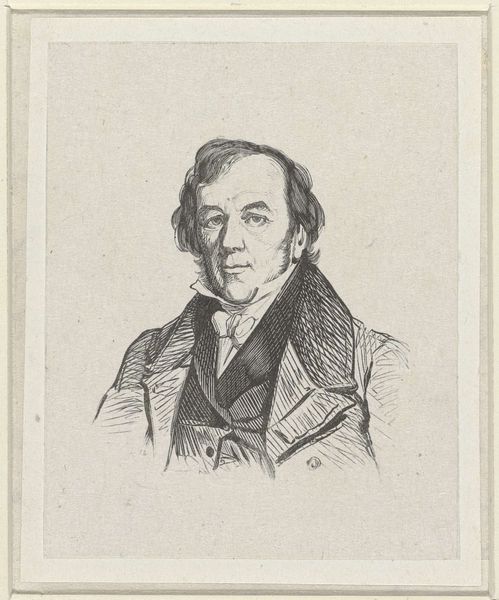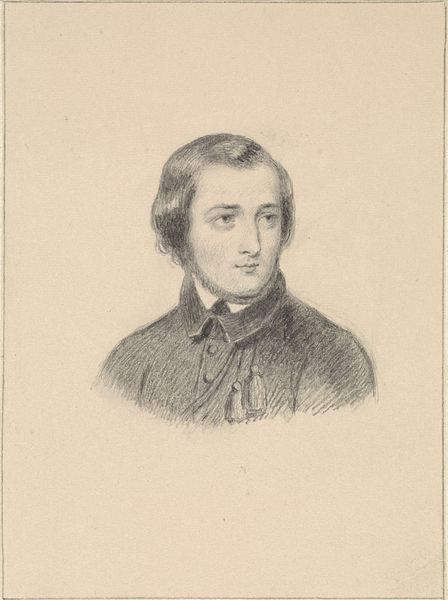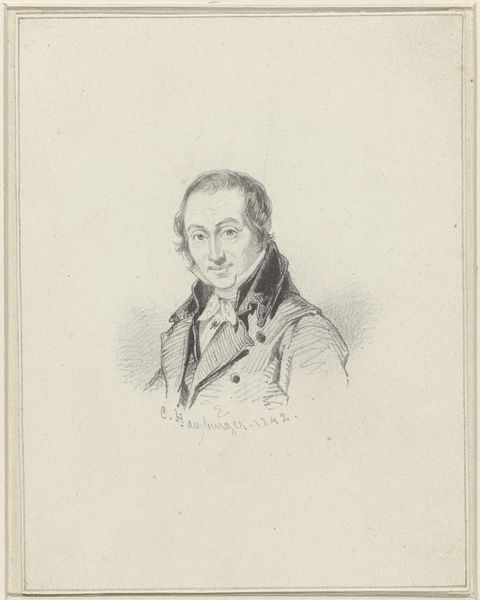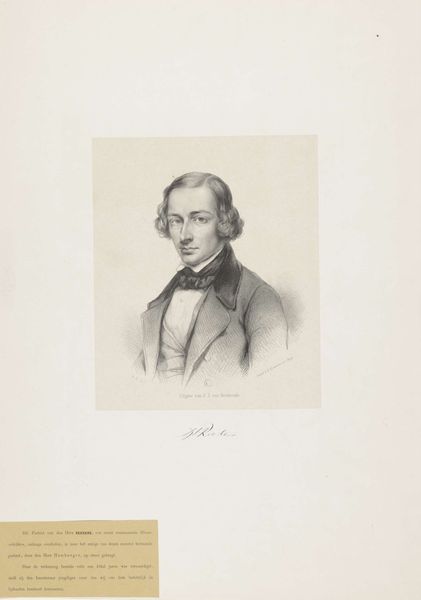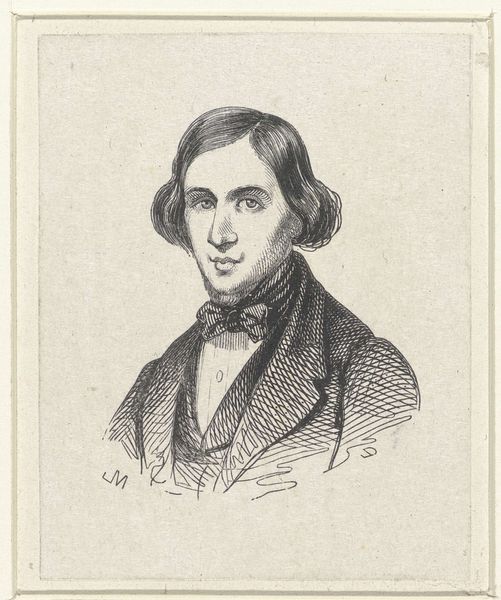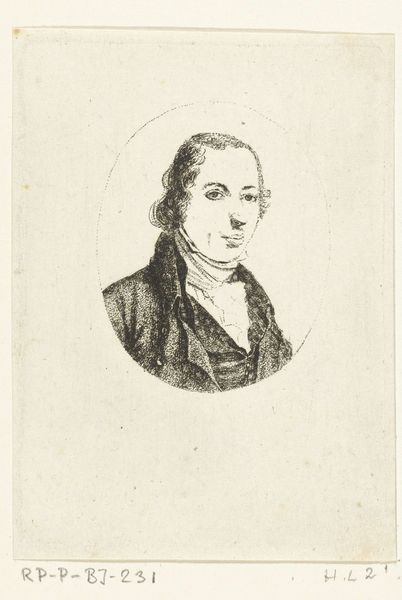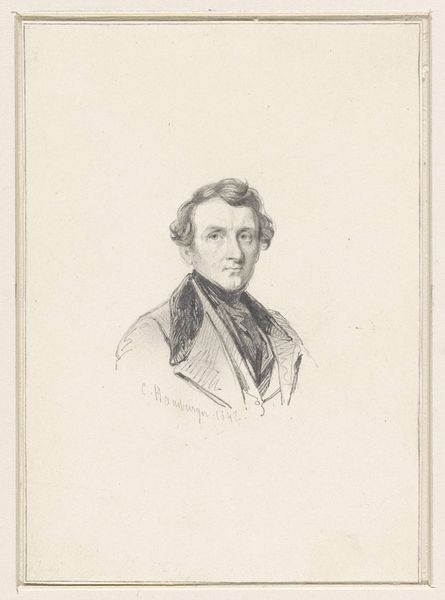
drawing, pencil
#
portrait
#
drawing
#
figuration
#
pencil drawing
#
romanticism
#
pencil
#
realism
Dimensions: height 161 mm, width 119 mm
Copyright: Rijks Museum: Open Domain
Curator: Standing before us is a pencil drawing titled "Portret van Simon van den Berg," created between 1841 and 1842. Editor: My immediate reaction is of quiet contemplation. The subject seems lost in thought, a gentle melancholia hangs in the air. Curator: It's interesting to consider the process, isn’t it? Pencil, paper, the artist’s hand carefully rendering each line. How did Van den Berg sit? How long? These portraits were, after all, commodities. And the paper, of what make, and origin? Editor: Precisely! And the social implications are rich here. This is Simon van den Berg, an individual worthy of portraiture at a specific time. What position did he hold in society? What power dynamics are embedded in this exchange between artist and sitter? I find it crucial to unravel the narrative surrounding representation. Curator: His gaze is quite deliberate; the hatching shows a depth in the modelling of the jacket that goes from soft in its left through almost scribbly on its right. There's also such a wonderful tension between capturing a likeness and a deliberate artistry here. One is performance and other pure practice. Editor: The portrait also exemplifies how ideas of masculinity were portrayed then. Soft, intellectual and with such a melancholic gaze; very much romantic, though produced during the era of realism, perhaps an intentional nod. How much control did Simon have of the image being projected, against reality, do you think? It serves as an interesting lens to view issues around representation and visibility through. Curator: Yes, these are key factors. Considering who commissioned it and why, and where such images are then placed: always crucial questions in evaluating this production. There's also a strong class dimension to this. Pencil as a medium has its own constraints too, though the possibilities within are beautifully showcased here. Editor: Absolutely. It offers a compelling glimpse into the complexities of identity and social standing during that era. Thinking about this portrayal helps us connect to debates around visibility and personhood as they existed then, but importantly continue to evolve. Curator: So, by analysing the tools used and how images were created in this era we can learn so much about who was portrayed, by who, and how—and how images function even today. Editor: Exactly. By acknowledging these layered complexities, we enable richer and more inclusive understandings of art history, but, too, contemporary portraiture.
Comments
No comments
Be the first to comment and join the conversation on the ultimate creative platform.
